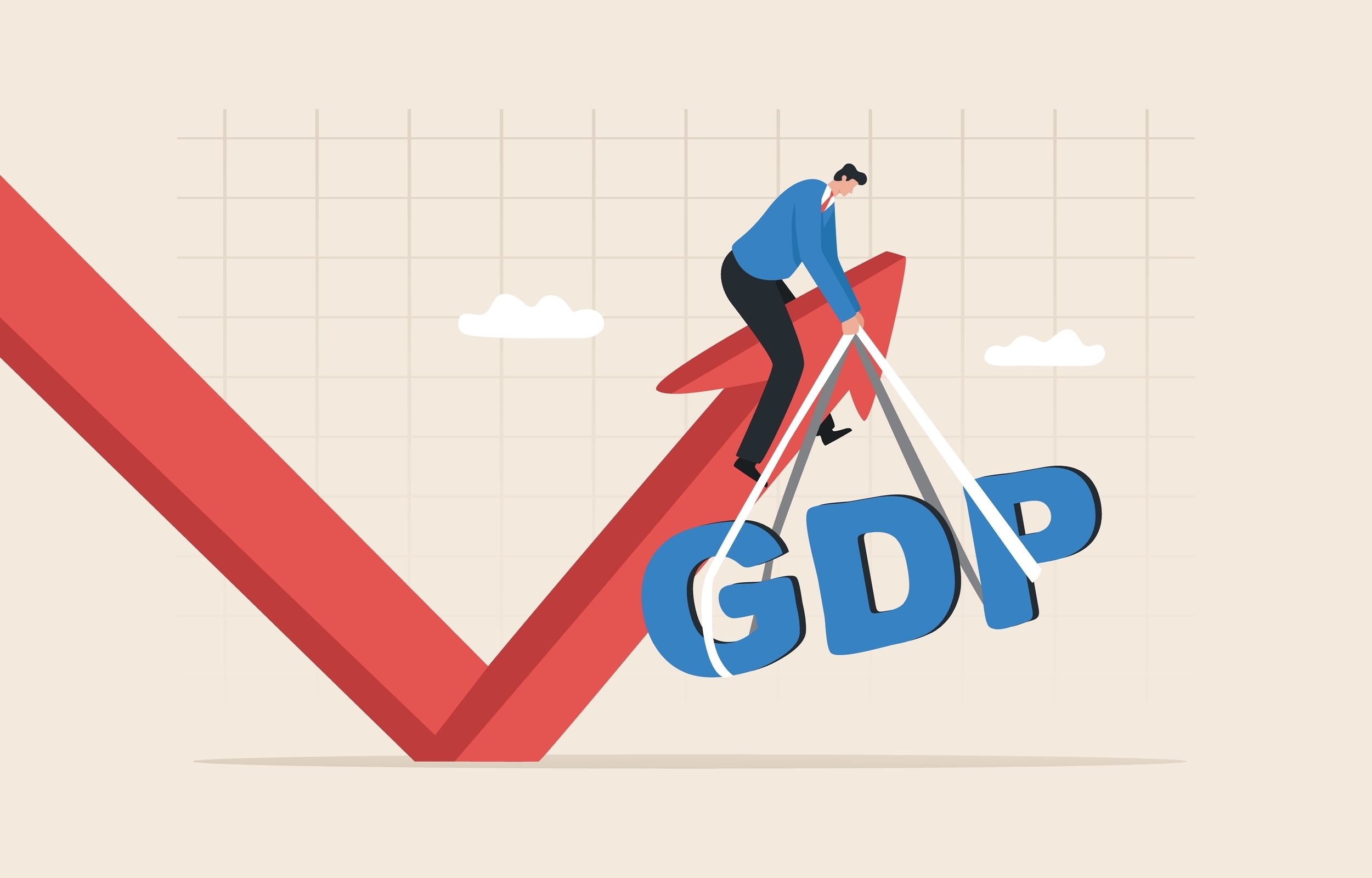Summary: What can GDP Predict?
Halfway through 2023, the biggest question for economists, financial analysts, and central bankers is whether Canada, and other developed economies, are facing a decline in gross domestic product (GDP) and heading towards a recession.
Regardless of technical knowledge on the subject, we know instinctively that a recession = bad. The economy, ideally designed as a perpetual growth machine, contracts (in order to meet the definition of a recession, the economy must shrink year-over-year for at least two consecutive quarters). And when we say the economy contracts, what we mean is gross domestic product (GDP) falls.
What is it?
GDP is a cumulative measure of the economy and therefore our best estimate of the economic health of a country. GDP is a sum total of the dollar value of all of final goods and services (those bought by the end-user) over a certain period of time, typically a quarter or a year. Higher GDP means a growing economy, which translates into more job opportunities and a greater aggregate ability for the population to spend money.
Trying to capture overall economic health in one figure inevitably leaves some gaps. GDP doesn’t tell us anything about wealth distribution, or the sectoral beneficiaries of a rising GDP. Canada, a net exporter of oil, experiences an economic bump when oil prices rise, but this leaves the general Canadian consumer worse off from a consumption standpoint. GDP also contains no measure of the environmental degradation necessary to produce end-user goods and services, which may come at the long-run detriment of a country with a growing economy.
Inflated GDP can come from things that generate no value for society. Taken in isolation, paying more to go to the dentist will boost a country’s GDP. But it doesn’t leave the consumer any better off. GDP can also be propped by up by government activity in myriad ways, both on the expense side (spending on infrastructure and other public projects or social welfare programs), and on the tax side (lower taxes leave consumers with more funds available to make purchases). The government can also spend additional funds on education and defense, and this too will be reflected in the GDP figure. In Canada, considerable efforts were made to sustain a bludgeoned economy through Covid-induced lockdowns, including stimulus checks and moratoriums on student loan repayment. These decisions were aimed at protecting vulnerable consumers and preventing our economy from fracturing, but they still involve trade-offs. Elevated inflation and associated higher interest rates that we see today are intrinsically tied to government and central bank action taken throughout the pandemic.
Many investors are wondering what they should do with their investments as news headlines of a pending recession pervade. Some question whether it’s time to exit the markets altogether and re-enter when the economy has found greener pasture. The market is sometimes viewed as a proxy for the broader economy, but importantly from an investing perspective, GDP growth doesn’t tell us much about market returns in the moment:

There have been negative values for TSX annual returns over the past 15 years, and there have been negative GDP readings, but not once did they both occur in the same year. The correlation of GDP growth and TSX total return is only -.075, well below a statistically significant level. Even if you knew definitively that we would enter a recession in 2023, you still wouldn’t know how the market would parse that information. What’s happening with GDP in the moment doesn’t really say anything about what’s happening with the stock market.
In the long term, stock market returns are driven by corporate earnings growth, which are in turn driven by GDP. But so far as the market is (imperfectly) forward-looking, it isn’t overly concerned with what the economy is doing right now. It’s concerned with what it’s going to do in the future.
We misplace faith in other economic indicators as well. We love trade surpluses (meaning other countries buy more from us than we buy from them) because we feel that our transactions at the global scale are profitable. My barber has a trade surplus with me, because I pay him money for services and he doesn’t purchase anything from me. I’m comfortable with my trade deficit, though, because I’m receiving a service that will prevent me from looking like Tom Hanks in Castaway. Quality of life is driven by consumption, not surpluses. China has trade surpluses with most of the world, but quality of life from a consumption standpoint lags Canada and other developed nations.
When you get scared of a negative GDP number, it’s important to keep in mind that GDP is a lagging indicator. It’s a measure of the economy how it existed previously and doesn’t necessarily reflect its status right now. Just because there used to be a monster under the bed doesn’t mean that it’s still there.
This is not to minimize the relevance of GDP. Economic growth (so long as the beneficiaries aren’t too concentrated of a group) is what drives collective prosperity. But recessions are a normal feature of the economic cycle and need not be feared by long-term investors.
For more articles similar to this one (What GDP Does and Doesn’t Measure) by Max Kirouac, click here.
Opinions are those of the author and may not reflect those of BMO Private Investment Counsel Inc., and are not intended to provide investment, tax, accounting or legal advice. The information and opinions contained herein have been compiled from sources believed reliable but no representation or warranty, express or implied, is made as to their accuracy or completeness and neither the author nor BMO Private Investment Counsel Inc. shall be liable for any errors, omissions or delays in content, or for any actions taken in reliance. BMO Private Investment Counsel Inc. is a wholly-owned subsidiary of Bank of Montreal.

